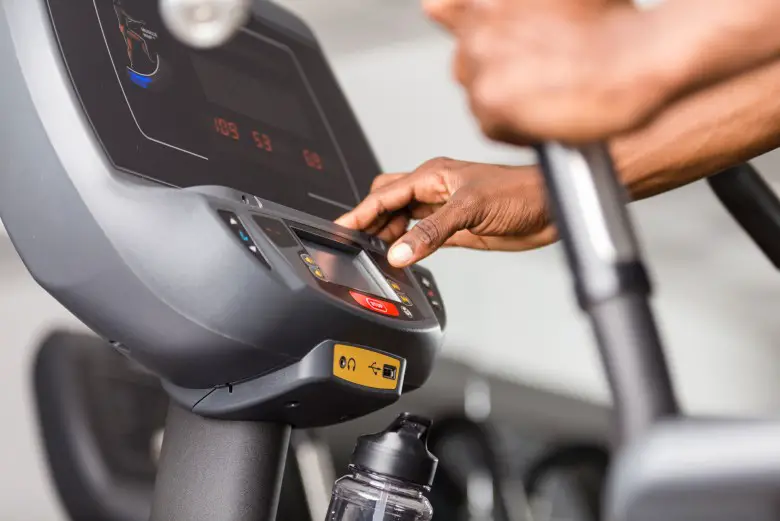Lifestyle
Prepare For Change: Best 5 Ways To Manage Changes In Workplace:

Prepare for change is essential in today’s rapidly evolving digital world. Trends in the economy, workplace organization, and workouts are all moving fast.Staying the same is not an option for any person.
Expecting and dealing with change is the key option for people. The workplace can afford to stagnate.
Change might be the only thing ordinary people count on. Because change occurs faster than ever, adherence to change management best practices is essential.
Understanding Change Management:

View changes in the workplace as an opportunity to create, thrive, and perform:
“Change management can be the particular collection of policies companies enjoy to handle unforeseen changes and deliberate or planned procedures to carry out many strategic preparations to prepare for change.”
The change management process should include almost everything in a business, like how people work together, how things are done, the tools are used, how information is shared, the overall setup, who is in charge, and more.
Change management means doing as much as possible to be in control and superiented to allow it to happen simply.
It starts with thoroughly examining the risk involved in managing change and doesn’t finish until both expected and unexpected changes are completed with as little negative impact as possible.
Importance To Prepare For Change In Workplace Organization:

Changes are always crucial for a workplace organization. It is vital for prepare for change and sustaining growth and success. Prepare for change enables somebody to learn deeply.
It shows relevance forced to Innovation and developed crucial slip with a workforce.
Remaining Relevant:
Embracing change always gives her all along evolving needs and industry trends.It is crucial for ones wo wants real prepare for change.
Encouraging to Boost:
Change provides a platform for the best-ever innovation to strategies developing skills.
It promotes acquiring new skills in the organization.
Career New Opportunities:
They changed the exploration of new, every-volume dynamic world demographics and calibrations. They are all welcome to prepare to change
Improving Staff Morale:
Organizational change enhances efficiency, preventing Burnout and promoting a positive workforce.
Change is often formed by crisis shifts in performance, industry changes, and government policies.
It gives you a strategy to adjust to organizational methods that are well-defined positive change.
This approach posters of ability and a cultural innovation insurance organization thrive in a dynamic environment.
Causes Of Change In The Organization:

Many things can be catalysts for organizational change. They have pillar value in prepare for change process. Some are:
- New leader and bosses: When the people in charge change
- Organizing things differently: Change the way the company is set up to prepare for change and how things are done
- Expansion in product or business model
- Facing a lot of Competition with fellow companies that do similar things
- Doing business in a new way: Changing how the company makes money or does its work
- Growing and adding more stuff: Getting blogger by adding new product.
Tips To Prepare For Change:

Preparing for change is essential at any stage of your work, whether it is work of fitness, any organization, or something like that. Are you ready for a dynamic brilliance? Then there are helpful tips to prepare for change:
1. Be Open-Minded And Receptive To Change:

Accept and celebrate some of the change, explore, and engage with others. This is key to viewing as non threatening to prepare for change and being able to thrive in it.
Identify Your Biases:
Cognitive biases are where people use flawed and subjective judgment to access data. The brain’s tendency to cause these flaws is due to various factors.
These are mental shortcuts and have a lot of sense. You must recognize that the world simply can’t process these quick decisions.
According to Connie Stemmie’s Develop Good Habits article, at least 15 biases cloud rational thinking.
She says people use cognitive biases when time is a factor in making decisions or when they have a limited capacity to process information.
Some solutions to help combat bias:
- Be open and honest
- Encourage new thinking
- Try different things
Seek Out Different Sources Of Information:
Try different sources of information to increase your perspective, thoughts, and points that read books, articles, and blogs.
With all this information, you can learn insights and perspectives that can spark your prepare for change curiosity.
People are encouraged to seek out excellent information or ask experts. The primary sources of pieces of information are:
- Blogs
- Digital archives
- Library catalogue
- Websites
- Youtube
- Magazines
- Catalog
- Newspapers
- Interviews
- JSTOR
- Research guides
- Articles
Engage In Respectful Dialogue:

Respectful Dialogue is a perfect connection between two or more people with different viewpoints and voices.It includes skills beyond prepare for change, like talking, going aside, and listening without judging.
Why is genuine dialogue so rare? The conversation can be brutal and unfair- only helpful people do it well. Some personalities will open up to another point of view and struggle with conservation. How, then, do you foster respectful dialogue in the workplace?
Here Are Four Tips For Engage Respectful Dialogue:
Break Down Barriers:
An excellent way to make people come together is to break down barriers. People feel safe expressing this opinion about a fiction book since the dialogue is unrelated to work goals.
Establish Rules:
Rules are an essential part of rules. It fosters civility, openness, and respect, making dialogue different from traditional.
Suggestions include:
- Seek to understand, not to persuade
- Listen carefully
- Without judgment
- Don’t interrupt speaking
- Do not pressure anyone
- Treat others with respect
- Everyone has equal value
Create Space For Spontaneous Dialogue:
You should create space for spontaneous dialogue. However, it may be challenging to use some strategies.
- You have to speak regularly
- To join the opportunity to speak in front of others.
- Join public speaking clubs
- Volunteering to lead meetings.
- You have to focus on your breathing and visualizing success.
- You have confidence through positive self-talk
- Think about a topic that is relevant to your field of interest.
Practice and challenge yourself.
You have good communication practice in the workplace.
Communication in the workplace is an exchange of ideas and thoughts concerning work, but effective workplace communication makes you more purposeful, and the receiver of the message is satisfied.
Challenge yourself to prepare for change. You will work better than the previous day.
It is not just information to a team member but explaining it so they will understand it.
2. Practise Mindfulness:

Mindfulness is the situation of moment-to-moment awareness. It is a sensor awareness of yourself and your environment, aware of your feelings and thoughts.
You do not react or judge others. Practicing mindfulness has a positive impact on workless organizations. It has a crucial role in prepare for change strategy and driving healthy work.
The appropriate type of training is based on your organizational goal and the more common activity for the workplace.
Webinars:
These are similar to the facilitator of that program. They provide flexibility in actual participation.
They are lower cost scale above different locations to provide great confidentiality.
Self learning:
Regardless of the type of mindfulness you plan to offer, the cave benefits of mindfulness are linked to your organizational goal.
The mindfulness practice can be done anywhere, anytime.
Self-learning can help you to create a daily prepare for change; additionally, it brings attention to your work and peace in your everyday life.
Tips to be more mindful at work:
- Set goals for yourself
- Take time for breaks
- Take care of your mental health
3. Stop And Stabilise:

Always stay on things quickly, not only what changed but also what stayed the same. Also, note what is in your control and what is not.
This will also help stabilize your reaction to uncertainty or change and remain unfazed and unflappable.
4. Be a Change Entrepreneur:

Take ownership of your development and to be proactive. It is down to you to make change happen, so grab all the new opportunities and facilities available.
Develop a statement to Increase Entrepreneurship:
- Create bond
- Celebrate mistakes
- Promote others
- Recognise and rewards
- Build personal trust
5. Expand Your Social Network:

Focus on all the numbering and forms of relationship that you have. A tremendous professional network gives an excellent tolerance for change and increases readiness.
It gives you a lot of benefits. Engage and build relationships. When employees are given resources to build peer relationships, it increases demand to prepare for change in the workplace with loyalty and morale.
They can interact and network with people they don’t see in the department. You can strengthen your company by empowering your employees to build these relationships.
Your employees feel better connected and more heartened about one’s company values.
You can attract attention to specific topics that need to be better addressed using social channels.
It has you post self-development learning, discovery, and engage with analysis.
Working Towards Goals With Adaptability In Mind:

Adaptability is any person’s ability to adjust changes according to their environment. When you think about career aspirations, they directly affect how flexible you can be. By practicing adaptability, you can respond quickly to changes.
For example:
A shift in work priorities to meet business needs causes expectations of different types.
Possible new ideas on how this particular work can be done.
Effective steps:
- Be responsive to all the information.
- Ask questions
- Do you research
- Set goals with supervisors
- Improve your skills
Change is a part of life, so adaptability is crucial when we accept that nothing stays the same. It gives us new thoughts on how to grow personally and professionally.
Build Your Psychological Toolkit For Change:

You have to work tirelessly toward your goals, changing paths in the short term to succeed in the long time. Psychological tools are the ways of thinking, prepare for change, and behaving positively.
An example of a Psychology toolkit is through diffusion. It also involved goal setting, imagery, self-talk, and relaxation. Always be optimistic about the present and the future.
The four PS formulations include predisposing, precipitating, perpetuating, and protective factors.
You always have to trust in your abilities to make a lot of challenges and then adapt to achieve them. Build your resilience so that you may learn, adapt, and move on quickly when faced with setbacks.
Conclusion:
Potential changes at work can be challenging, but seeing them as opportunities to focus on what is in your control and be productive in your personal growth is crucial.
Build strong professional connections and develop hosting strategies to tackle challenges.
So, by embracing and prepare for change, staying resilient, and learning from setbacks, you not only manage change but thrive in a fantastic workplace setting for long-term success. So are you ready to prepare for change with this comprehensive guide. You can also read other other excellent articles here.

 Fitness1 year ago
Fitness1 year agoDiscover Elite Body Sculpting: Best 8 Method Revealed For Precision Shaping:

 Fitness1 year ago
Fitness1 year agoRealistic 6 Month Body Transformation Female: From Struggle To Power

 Fitness1 year ago
Fitness1 year agoBody Fitness Tips For Female; Unleashing Fitness Secrets

 Workouts1 year ago
Workouts1 year agoEcho Bicycle For Gym And Fitness: Comprehensive Guide

 recipe1 year ago
recipe1 year ago13 Gluten Free Egg Bites Recipes: Easy and Delicious

 Training1 year ago
Training1 year agoLeadership Coaching vs Training: Let’s Give Best Of Your leadership journey:

 Health2 years ago
Health2 years agoHow To Lose 50 Pounds in 5 Months: Is it possible ?

 Fitness1 year ago
Fitness1 year agoMindFit: The Key To Unleashing Your Inner Strength
